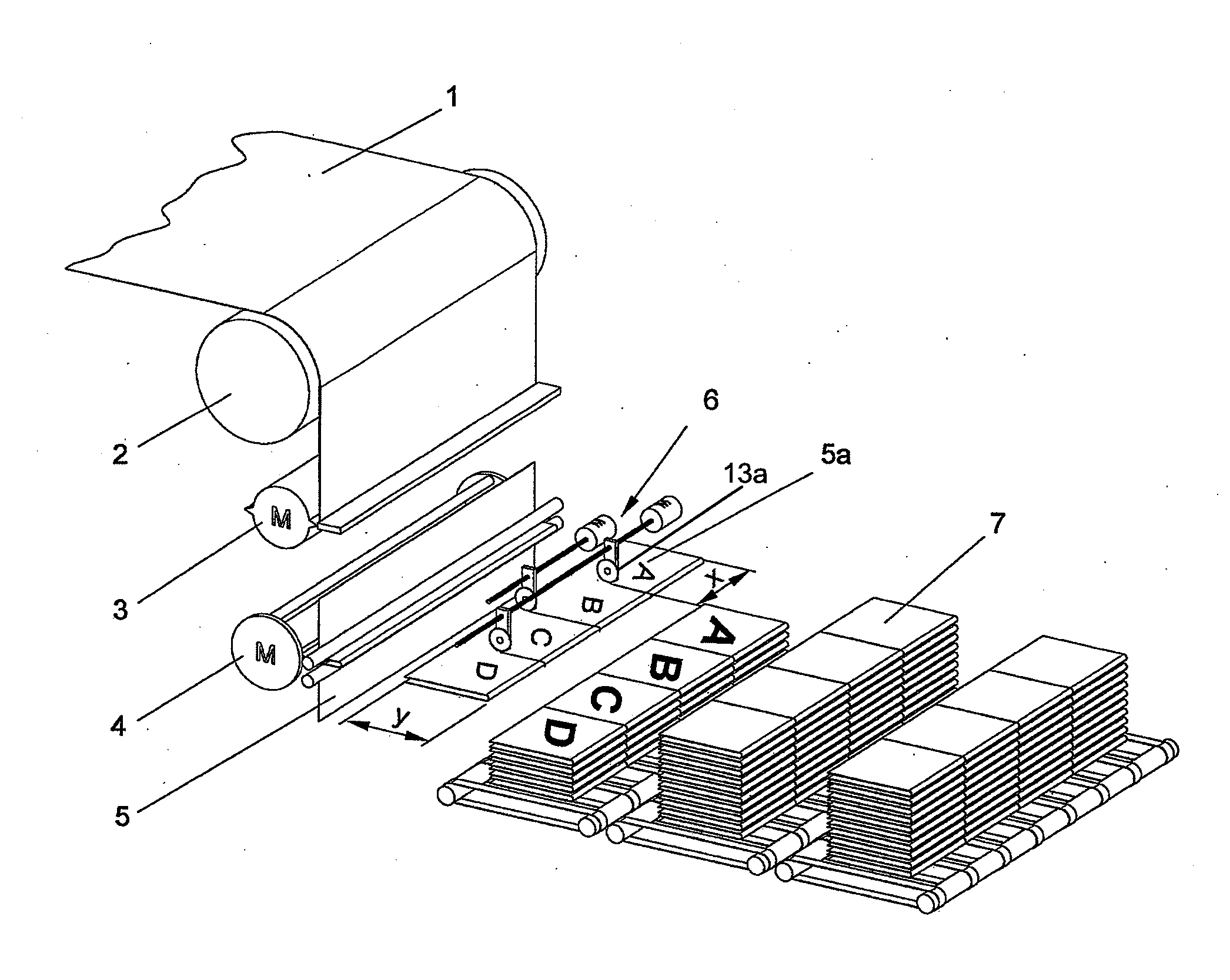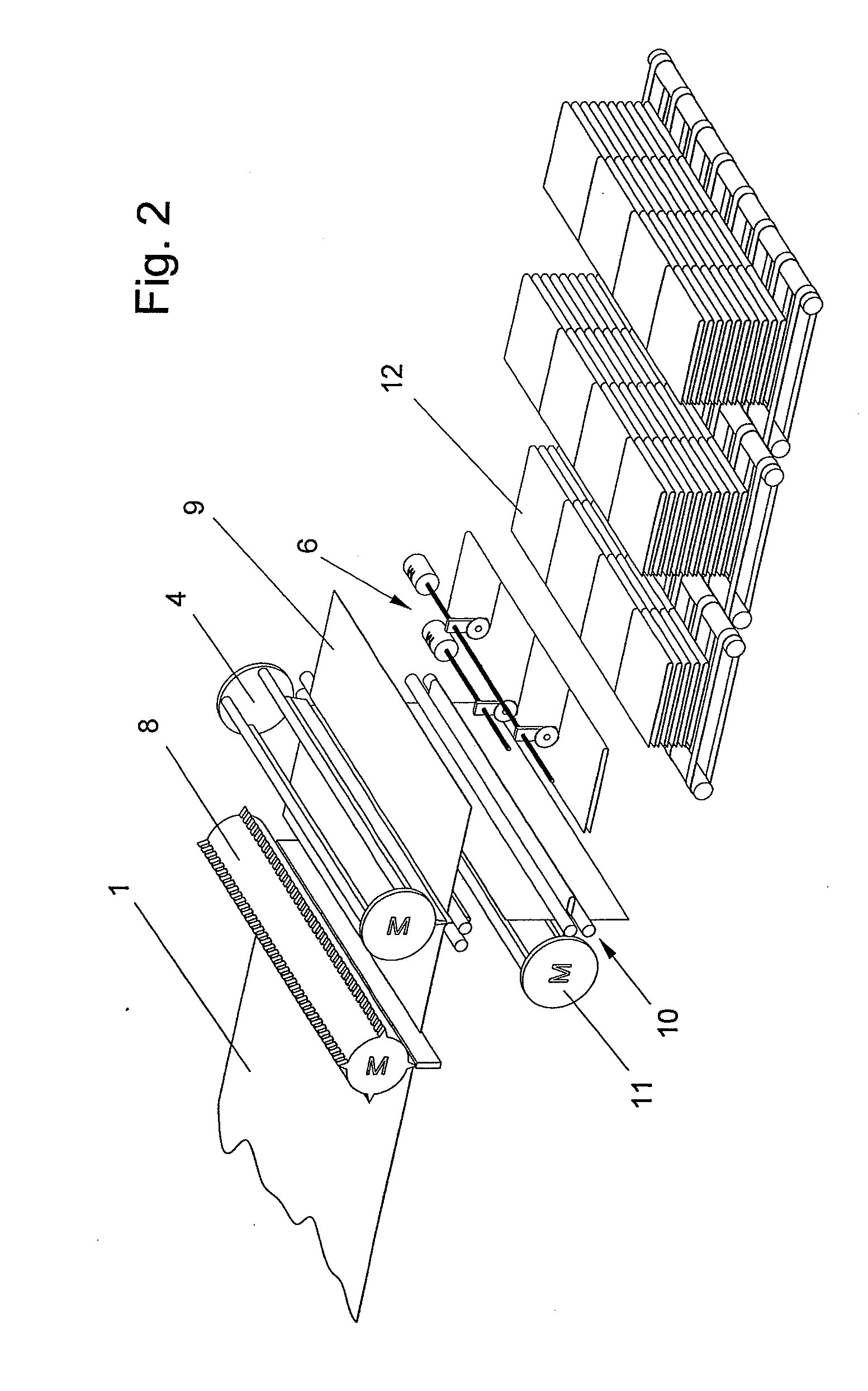Method for producing a printed product
- Summary
- Abstract
- Description
- Claims
- Application Information
AI Technical Summary
Benefits of technology
Problems solved by technology
Method used
Image
Examples
Embodiment Construction
[0031]FIG. 1 shows a sequentially printed paper web 1, which may be printed on both sides. With the aid of an operative connection to a deflection roll 2, the paper web 1 may be transferred from a horizontal to a vertically extending path. The 90° deflection, shown herein, may not be system relevant per se because any other type of paper web guidance may also be possible, based on the available space. In principle, a deflection may not be required, as shown, for example, in FIG. 2.
[0032]FIG. 1 shows that following the deflection, a motor-driven cutting device 3, e.g., a rotary cutter, is used to cut a section having a specific length, in a direction crosswise to its longitudinal direction, from the paper web 1. This length may be determined to be such that it allows a one-time folding of the printed sheet with the aid of the folding sword 4 during the following folding operation. Subsequently, the folded printed sheet 5 may be divided into a plurality of partial web sections A-D (5a...
PUM
 Login to View More
Login to View More Abstract
Description
Claims
Application Information
 Login to View More
Login to View More - R&D
- Intellectual Property
- Life Sciences
- Materials
- Tech Scout
- Unparalleled Data Quality
- Higher Quality Content
- 60% Fewer Hallucinations
Browse by: Latest US Patents, China's latest patents, Technical Efficacy Thesaurus, Application Domain, Technology Topic, Popular Technical Reports.
© 2025 PatSnap. All rights reserved.Legal|Privacy policy|Modern Slavery Act Transparency Statement|Sitemap|About US| Contact US: help@patsnap.com



